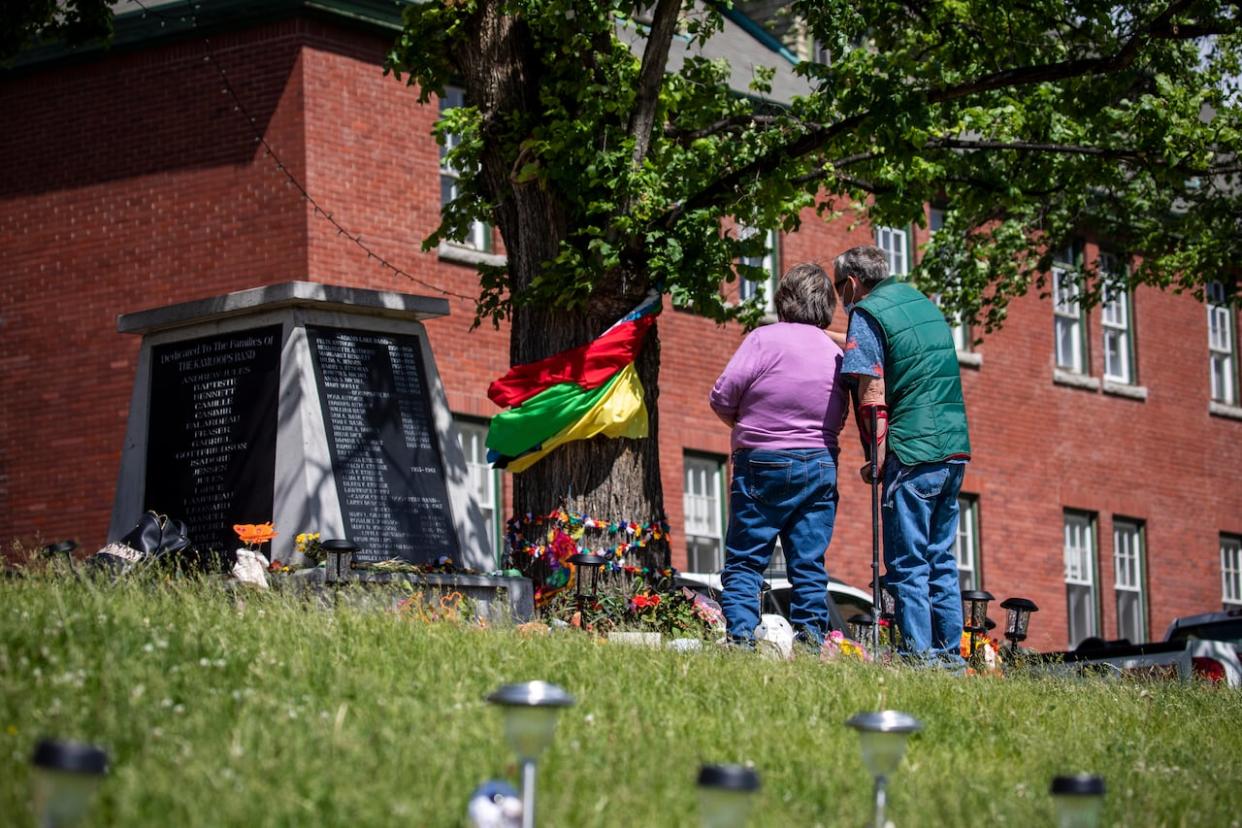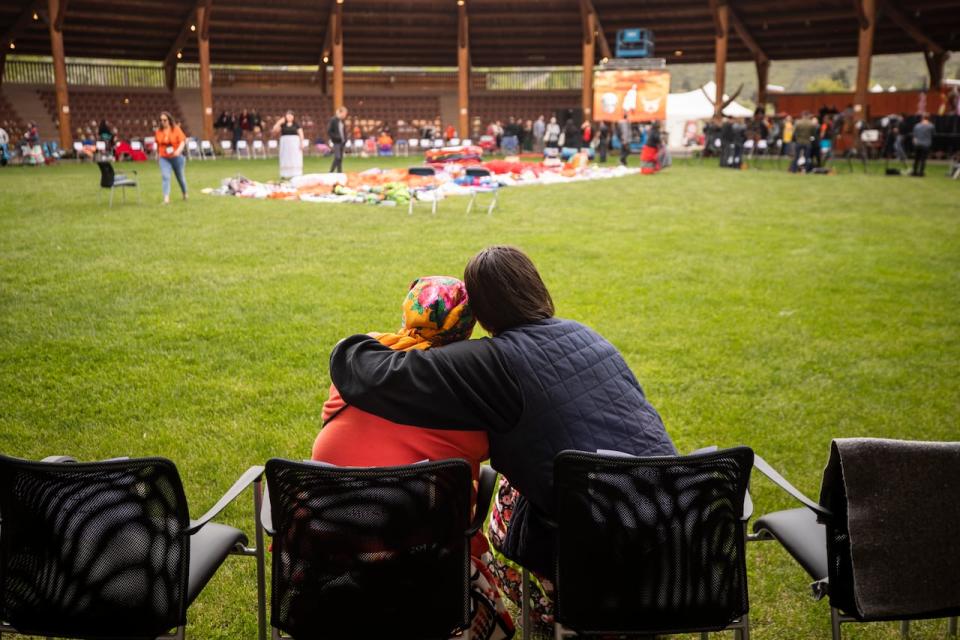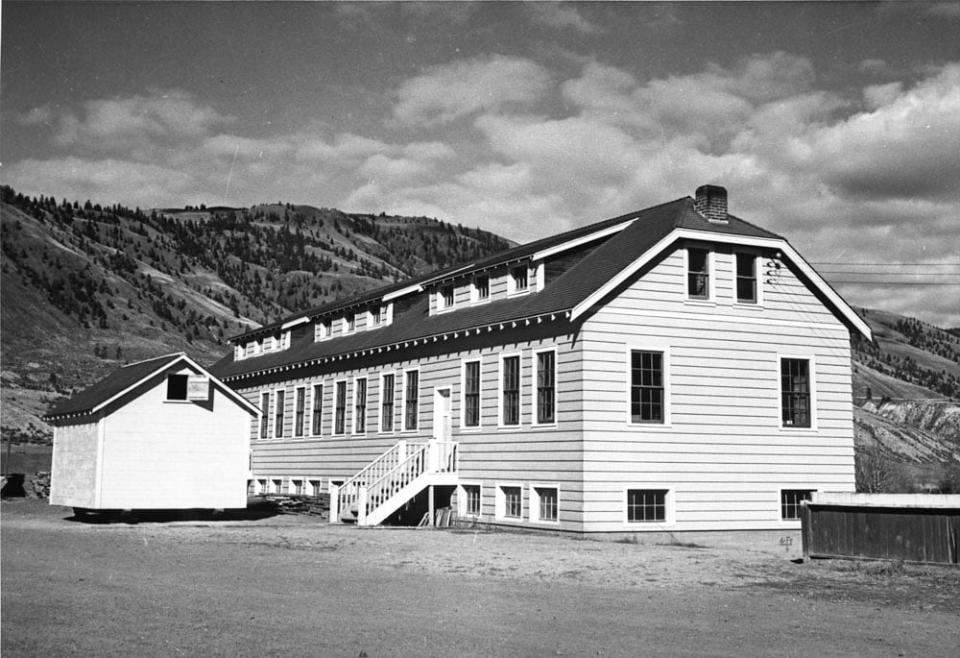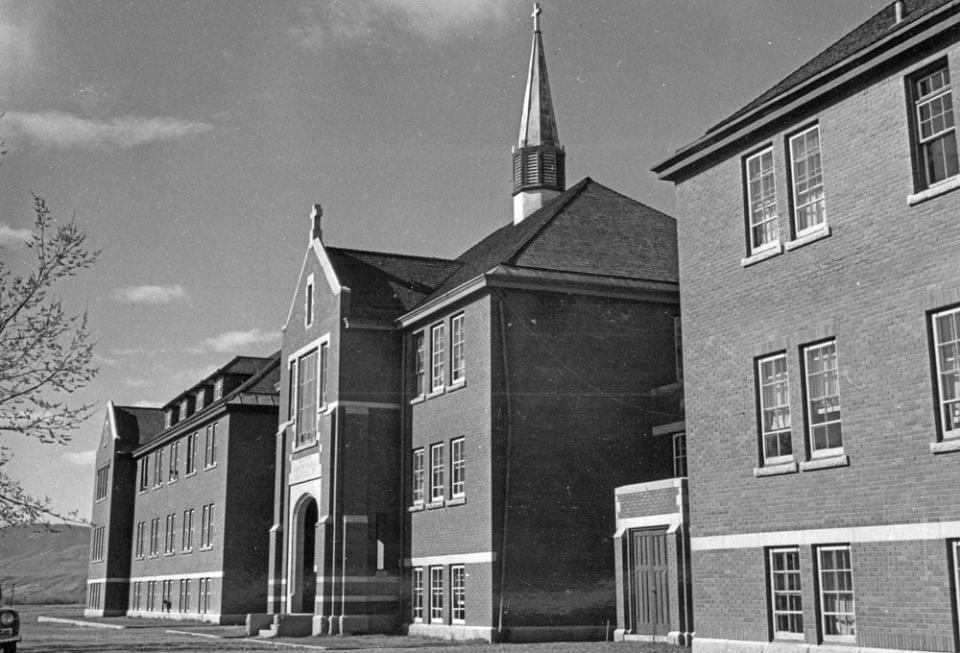Tk'emlúps te Secwépemc to reflect on 3 years since '215' findings

WARNING: This story contains distressing details.
It's been nearly three years since the Tk'emlúps te Secwépemc First Nation shared the preliminary findings of a ground-penetrating radar survey on the grounds of the former Kamloops Indian Residential School that the nation said indicated the remains of approximately 200 people could be buried on the site.
To many, that day and news is associated with the number 215, as that was the initial number of people's buried remains that was provided. Tk'emlúps te Secwépemc later clarified that the survey had found about 200 potential unmarked graves on the grounds.
On Thursday, the First Nation will have a day of reflection to honour those findings and consider the lasting impacts of the residential school system in Canada.
"We urge everyone to set aside time for introspection, learning, and being with loved ones," Tk'emlúps te Secwépemc said on its website.
"As we pause to reflect and honour the memory of Le Estcwicwéy̓ (the missing) and all those affected by the residential school system, let us also recommit ourselves to the ongoing work of reconciliation and healing."
Tk'emlúps te Secwépemc offices will be closed on Thursday.
As she thinks back over the past three years, Angela White, executive director of the Indian Residential School Survivors Society, said she's thinking about all the people who have reached out needing support and looking for ways to help survivors. But this time is also about considering that, for many, there may never be a resolution.
"It's really about helping people, guiding them, standing with them side by side and really looking at all the unanswered questions that we may never have answers for," said White.

People gather in the arbour with the Tk'emlúps te Secwépemc First Nation to mark the one-year anniversary of the announcement of the discovery of potential burial sites at the former Kamloops Indian Residential School in Kamloops, B.C., on May 23, 2022. (Ben Nelms/CBC)
Residential school history
More than 150,000 First Nations, Métis and Inuit children were removed from their home communities and families for extended periods and forced to attend church-run, government-funded residential schools between the 1870s and 1997.
The National Centre for Truth and Reconciliation (NCTR) estimates about 4,100 children died at residential schools across the country, based on death records, but has said the true total is likely much higher. Large numbers of Indigenous children who were forcibly sent to residential schools never returned home, according to the Truth and Reconciliation Commission (TRC).
Residential schools have been described by the TRC as an "attempt to destroy Aboriginal cultures and languages."

A new classroom building at Kamloops Indian Residential School is pictured in or around 1950. (Canada. Dept. of Indian Affairs and Northern Development / Library and Archives Canada)
Residential schools were often under-funded, overcrowded and, according to the NCTR, the education offered at residential schools was poor.
Children forced to attend residential schools were punished for speaking their own languages and engaging in other cultural practices and many suffered verbal, physical and sexual abuse at the hands of staff and other students, the NCTR says.
The Kamloops Indian Residential School was operated by the Catholic Church from 1890 to 1969, when the federal government took over administration. It closed in 1978.
Up to 500 students would have been registered at the school at any given time, according to the NCTR, and those children would have come from First Nations communities across B.C. and beyond.

The main administrative building of the Kamloops Indian Residential School is pictured in 1970. (Department of Citizenship and Immigration- Information Division / Library and Archives Canada)
Tk'emlúps te Secwépemc said its preliminary findings were a stark reminder of the abuse children faced at residential schools, for community members and survivors across the country, and served as a starting point for others to learn about what happened.
"While the number '215' has become a symbol of the children lost at the Kamloops Indian Residential School, it's important to recognize that it represents far more than just a numerical figure," the First Nation's website said.
"It stands for the countless spirits of children who never had the chance to return home from residential schools all across Canada. It signifies the enduring connections they had to their communities and the profound impact their loss continues to have across generations."
Searches continue
The 2021 announcement sparked a nationwide movement, as First Nations across the country began their own searches of residential school sites. At least 145 First Nations are receiving federal money for site searches, research or memorials, according to the federal government.
Several First Nations across Canada have employed ground-penetrating radar and other methods to search the grounds of former residential schools.
Ground penetrating radar does not find human remains — it detects soil disturbances that are inconsistent with the surrounding area, which combined with community knowledge can help identify where there may potentially be unmarked graves.
Whether or not to dig at former residential school sites has been controversial, as some survivors want human remains left undisturbed, while others feel exhumation could help lay victims properly to rest and offer some closure.
Support is available for anyone affected by their own experience at residential schools or intergenerational trauma, or by the latest reports.
A national Indian Residential School Crisis Line has been set up to provide support for survivors and those affected. People can access emotional and crisis referral services by calling the 24-hour national crisis line: 1-866-925-4419.

